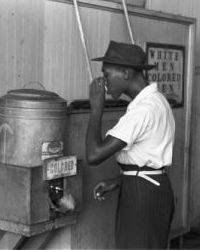
Though the Civil War began the movement to extend equality to African Americans, the promises of the 13th, 14th and 15th Amendments provide easier to accomplish in theory rather than in practice. The promising start towards racial equality soon faltered during the tensions of Reconstruction and laws were soon enacted across the country which enforced segregation of the races and the second-class status of African Americans.
Today, nearly 150 years since the end of the Civil War, people of all races, colors, creeds and beliefs continue the struggle to make America a nation where truly "all men are created equal."

Civil War to Civil Rights Commemoration - Summary Report
One hundred-fifty years ago, competing visions for the country and conflicting definitions of freedom led to a war that threatened the very existence of the United States. The nation was shattered into North and South by blue and gray. Fifty years ago, the streets of American cities ran red with blood again. From 2011-2015, the National Park Service joined the rest of the country in commemorating these major events that changed the nation forever–and continue to challenge it today. To honor these sacrifices, among many other special events, 40,000 people marched across the killing fields of Pickett’s Charge
at Gettysburg, and 50,000 marched across the Edmund Pettus Bridge in Selma.
Read more about the entire Civil War to Civil Rights Commemoration here. (Note: very large pdf file: 244 pages.)
Last updated: May 20, 2020
